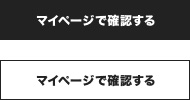- トップページ/
- Gifts by scene/
- Gifts with Noshi/
- MATCHA BOWL KOHAKU EDAUME
MATCHA BOWL KOHAKU EDAUME
warm painting
Nishikawa Teizaburo Shoten's vessels are attractive for their painting expressing the four seasons and the expressiveness of the glaze. Among them, the matcha bowl Kohaku-Ebai is a matcha bowl with a plum pattern that stands out, with a texture that is gentle on the ground. Although the colors are pale and light, the soft and gentle texture of the pattern is adorable, and it is a masterpiece that gives you a plump and warm feeling.
On the lower part of the outside, you can see the boundary between the potter's wheel and the glaze, and it's fun to see how it looks different from when you look at it from the front. Enjoy your tea time by preparing seasonal Japanese sweets along with delicious tea.
"Kayori" series that enjoys modifying tradition
This matcha bowl, red and white branch plum, is part of the ``Kayori'' series by Nishikawa Teizaburo Shoten, which proposes a new way to enjoy Shimizu ware. Find new ways to enjoy things that have been passed down from ancient times by making slight changes and combining them. This rich playfulness is one of the things that Kyoto has cultivated over its long history. Playfulness always adds glamor to people's lives and activities. ``Kayori'' was created by boldly incorporating Western colors and motifs into the painting, and combining traditional tea utensils in unexpected ways, giving it a fresh Kyoto glamor.
Matcha bowls are not only used for tea ceremonies, but are also recommended as small bowls for stews, ohitashi, aemonos, etc., as well as for adding a little ochazuke after drinking, for noodles, etc., or for serving ice cream, etc. . Also, if you arrange pickles etc. for your guests, you can also talk about the dishes and it will be a fun time.
Kyoto's aesthetic sense
Kiyomizu-yaki is one of Kyoto's most representative traditional crafts, and it was originally called that to refer to the pottery that was fired in the Kiyomizu-zaka area leading to Kiyomizu-dera Temple. Famous ceramics from various parts of Japan are made by taking advantage of the natural conditions such as soil and water that are unique to that region, but they are influenced by the aesthetic sense and culture of Kyoto, where people have gathered as the capital for 1000 years. It can be said that it is characterized by being a pottery that gives you a feel of Japan's unique Wabi-Sabi culture.
Since Kyoto was the capital, it was the center of Japan from ancient times and was a huge market where pottery from all over the country gathered. In the Momoyama period, as the tea ceremony became popular, tea utensils and vessels began to be made in Kyoto, and they were presented to tea masters, imperial families, court nobles, feudal lords, and temples around the country. Even now, there are over 300 potteries.
Evolution into simple modernity
Nishikawa Teizaburo Shoten, a long-established store that was founded in 1920 and has been working to expand sales channels for Kiyomizu ware and daily necessities to Siberia and the South Sea Islands of China since around 1922, has been developing new products rooted in traditional Japanese culture. Masu.
This is not uncommon in modern times, but since its founding, this long-established manufacturer has been introducing Shimizu ware not only in Japan but also in Europe, including Paris and the Netherlands. Due to his achievements, he became the first chairman of the National Federation of Small and Medium Trade Kyoto, and left his name as one of the pioneers in exporting traditional Kyoto crafts.Kiyomizu ware, which has been cherished in Kyoto, the capital of Japan, has been attracting attention around the world since then. continues to be done.
The vessels made by Nishikawa Teizaburo Shoten are reminiscent of the beautiful landscapes of Japan, and are based on the concepts of snow, the moon, and flowers; the delicateness of layered glazes, the pure craftsmanship, the unwavering tradition, and the gorgeousness of Kyoto. Expressing playfulness through vessels. While valuing Japanese-ness, we also look overseas, and are simple and modern. Yet, it is an emotional pottery that incorporates the unique aesthetic sensibilities of the Japanese people.
| Size | Diameter: 12cm
Height: 8cm |
| Capacity | 420ml |
| Weight | 271g |
| Material | ceramics |
| Country of origin | Japan |
| Gift box | This product would be packaged in a gift box. |
| Compatibility | Microwave: ☓
Oven: ☓ Open fire: ☓ Dishwasher: ☓ |
About penetration
- Cracks are cracks on the surface of the glaze that are created when fired pottery is taken out of the kiln and cooled. The intrusions in the glassy glaze, which have been an attractive feature of pottery since ancient times, have patterns that reveal their expression when exposed to light.
Feature of product
-
- Potted items may vary slightly in size, color, and shape, and there are individual differences. This product is recommended for those who want to enjoy a warm texture that is not found in mass-produced products.
- This product is recommended for those who understand that spots, uneven glaze, shading, distortion of shape, etc. are individual characteristics.
Notice
-
- Please note that sudden changes in temperature, such as pouring boiling water or placing it on an open flame, may cause damage.
- If you rub the bottom on a lacquer tray, lacquer table, etc., it may get scratched.
- Please refrain from scrubbing strongly with cleansers or nylon scrubbers with abrasives.
- Please avoid using colored, gold or silver painted ceramics in high-temperature appliances such as microwave ovens. This may cause the glaze to melt or the colored painting to peel off.
ブランド紹介
NISHIKAWA TEIZABURO SHOTEN
Ancient city Kyoto is Gojo slope. NISHIKAWA TEIZABURO SHOTEN is located in the area where the pots of pottery and pottery are connected. Since its establishment in 1917, NISHIKAWA TEIZA BURO SHOTEN, which has been selling pottery and porcelain mainly from Kyoto and Shimizu, has been promoting sales of Shimizu and traditional handicrafts in the world, bringing Japanese traditional culture to the world It is a long-established store to introduce.
Kiyomizu-yaki is a pottery that has been around since the Edo period, and was burned in Gojozaka, which is an approach to Kiyomizu-dera Temple in Kyoto. After the Meiji era, pottery was actively made around Shimizu, and the way that Kyoto's pottery was called Shimizu-yaki was established.
It is one of the pottery that can be regarded as a symbol of Japanese culture that has received the designation of the traditional craft designated by the Minister of Economy, Trade and Industry and the traditional craft designated by the Kyoto Prefecture Governor.
| 商品 | 価格(税込) | 在庫 | 個数 | |
|---|---|---|---|---|

|
¥7,150(税込) |
◯
|
Added to cart
抹茶碗 紅白枝梅には、他にもこんな仲間がいます
-
NISHIKAWA TEIZABURO SHOTEN
SAKE CUP SOKA AKIKUSA M SV GD¥14,300(税込)
-
NISHIKAWA TEIZABURO SHOTEN
PRIVATE MATCHA SET KUROYU SHIROTENMON¥49,500(税込)
-
NISHIKAWA TEIZABURO SHOTEN
TEACUP FUCHI SOMEAKA SANSUI¥13,200(税込)
-
NISHIKAWA TEIZABURO SHOTEN
RICE BOWL FUCHI SOMEAKA SANSUI¥15,400(税込)
-
NISHIKAWA TEIZABURO SHOTEN
MATCHA BOWL KOZANJI¥7,150(税込)
-
NISHIKAWA TEIZABURO SHOTEN
MATCHA BOWL MARGUERITE M SV¥11,000(税込)
-
NISHIKAWA TEIZABURO SHOTEN
MATCHA BOWL WHITE SAKURA¥11,000(税込)
-
NISHIKAWA TEIZABURO SHOTEN
TREASURE BOTTLE RED AND BLUE PAINTING FLOWERS AND BIRDS¥12,100(税込)
-
NISHIKAWA TEIZABURO SHOTEN
CHOPSTICK RESTS GOURD SET OF 5¥4,400(税込)
-
NISHIKAWA TEIZABURO SHOTEN
PAIRED RICE BOWL MISHIMA¥6,600(税込)
-
NISHIKAWA TEIZABURO SHOTEN
COFFEE CUP SAKURA¥6,600(税込)
-
NISHIKAWA TEIZABURO SHOTEN
Green tea bowl Flower Shiragiku¥11,000(税込)
-
NISHIKAWA TEIZABURO SHOTEN
COFFEE CUP CAMELIA¥6,600(税込)
-
NISHIKAWA TEIZABURO SHOTEN
KIYOMIZU-YAKI TEACUP WILD FLOWERS¥7,150(税込)
-
NISHIKAWA TEIZABURO SHOTEN
KIYOMIZU-YAKI TEACUP AUTUMN PLANTS¥7,150(税込)
-
NISHIKAWA TEIZABURO SHOTEN
Green tea bowl Flower Tsubaki¥11,000(税込)
-
NISHIKAWA TEIZABURO SHOTEN
Green tea bowl Mishima¥6,600(税込)
-
NISHIKAWA TEIZABURO SHOTEN
Green tea bowl Black¥13,200(税込)
抹茶碗 紅白枝梅を見た人はこんなアイテムも見ています
-
TOJIKITONYA
GRILL PLATE¥2,200〜(税込)
-
FUTAGAMI
JAPAN DELIVERY ONLY Pot mat Moon¥5,951(税込)
-
Nakamuradouki seisakujo
Egg cooker pan Kansai type¥6,545〜(税込)
-
PETARI
SHALLOW POT 18CM¥9,900(税込)
-
大矢製作所(おおやせいさくしょ)
GRATER¥13,970(税込)
-
woodpecker
CUTTING BOARD¥7,700〜(税込)
-
REDECKER(レデッカー)
Sink clean brush 3-piece set¥4,950(税込)
-
HAKUSAN PORCELAIN
3-point condiment set with wooden stand¥7,370(税込)
-
Kakunodate DENSHIRO
Cylinder 3 colors Sakura¥13,200(税込)
-
TAKAHASHI KOUGEI
Cara bowl¥5,280(税込)
-
KIHACHI
LONG LIFE URUSHI SOUP BOWL VERMILION¥8,140(税込)
-
足立茂久商店
Wappa 14.5cm-Basket used for steaming food¥9,350(税込)
-
Studio Aizawa
Milk Pan with both mouth¥9,460〜(税込)
-
Stelton
Rig-Tig BREAD BOX¥13,200(税込)
-
Plakira
YURAGI PLATE SET OF 4¥7,920(税込)
-
sumikama
KASANE BREAD KNIFE¥13,200(税込)
-
Yurin
BRASS BELL BIRD¥17,600(税込)























%20MILK.jpg)













.jpg)




































.jpg)






.jpg)













































































.jpg)
.jpg)







